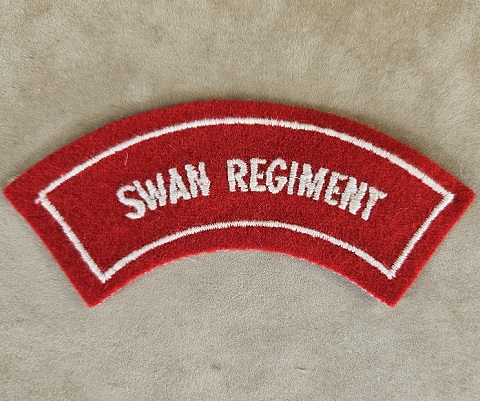Description
Description: Battledress Flash – SWAN REGIMENT.
Condition: Near Mint
Comments: Worn by the 28th Infantry Battalion (The Swan Regiment) up to 1960 on battledress uniform.
At the outbreak of the Second World War, due to the provisions of the Defence Act (1903) which precluded sending the Militia outside of Australian territory to fight, it was decided to raise an all-volunteer force for overseas service. This force was known as the Second Australian Imperial Force.
The infantry units of the 2nd AIF adopted the same designations as those of the 1st AIF, with the prefix numeral ‘2’ in front in order to differentiate them from the Militia battalions that continued to exist. As result, during the war there were two battalions to bare the numerals 11th Battalion. The 2/11th Battalion was attached to the 6th Division and served in the Western Sahara, Greece, Crete and the Tobruk, as well as in the Pacific.
At the same time, the Militia 11th Battalion (City of Perth Regiment) was attached to the 13th Brigade, 4th Division and spent most of its active service on garrison duties in Australia before taking part in the New Britain campaign in 1944-45.
11th Battalion posing on the Great Pyramid of Giza, 1915.
The 28th Battalion shared a similar history to the 11th, being formed in 1915 as part of the 7th Brigade and fighting in Gallipoli, France and Belgium during the First World War. Following the war, it was re-raised as the 28th Battalion (Swan Regiment) in 1921 and was based in east Perth.
During the Second World War the 2/28th Battalion served with the 9th Division at Tobruk, El Alamein, New Guinea and New Britain, while the 28th Battalion (Swan Regiment) fought in New Britain alongside the 11th Battalion in 1944-45.
Following the end of the war, these four units were disbanded. In 1966 the 28th Battalion was reformed as the 28th Battalion, Royal Western Australia Regiment, and the following year the 11th Battalion was also reformed. In 1977, both units were redesignated as independent rifle companies, however in 1987 they were amalgamated together to form the current unit.



